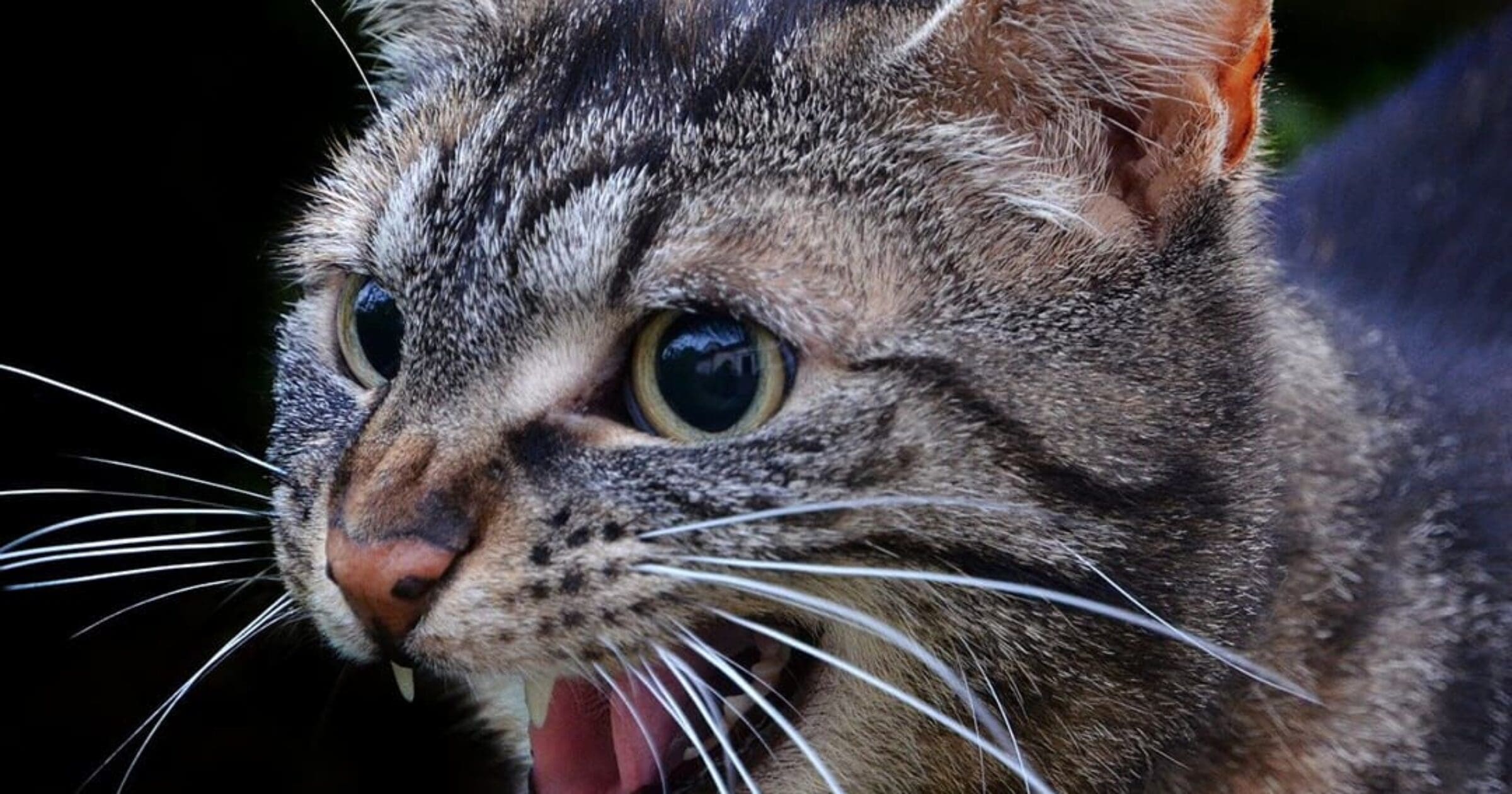
Although we humans may not always understand what they’re saying, cats have exceptional communication skills and talk to humans and other animals – sometimes in ways that are not always obvious – but in others that are widely recognized as behavioral and vocal clues to their moods and thoughts.
In this series of three articles, we’ll explore general groupings of behaviors – “How Can I Tell If My Cat Feels Safe?”, “How Can I Tell If My Cat Feels Wary?” and “How Can I Tell If My Cat Feels Defensive?”
I’m feeling rather threatened
A cat who arches his back and fluffs out his tail and fur is making himself appear aggressively larger. This is instinctive intimidation “fight” behavior in response to an actual or perceived threat, sometimes even seen while playing. Be cautious.
A cat may also make herself appear as small as possible, with body and tail low to the ground, when engaging in “flight” behavior as she retreats from a perceived threat or to hide from danger. You may have witnessed your indoor cat doing this when it thunders or when there are loud unfamiliar noises such as a doorbell or barking dogs or if strangers are in her presence.
Ear movement may also indicate if a cat is confused or feeling cautious, and she will communicate this by moving her ears back and forth. However, if her ears are flat back, this is a typical defensive posture and she could be ready to attack.
Cat hissing is associated with agitated states and emotional distress including mild annoyance, fear, or even physical pain. Be aware that a cat who hisses is not happy and you should be cautious as to why. In some cases, a cat hiss will be a warning from a distance, and cats who continue to feel stressed or endangered, may escalate with swiping with their front paws or even biting. In other concerning cases, if a cat is hissing while demonstrating a hunched posture or is unusually hiding or is not acting physically comfortable, he could be experiencing illness or physical trauma, which requires immediate investigation and medical attention.
Whining, howling, or caterwauling is a cat’s way of communicating confusion, caution, or danger and requires additional investigation as any of these could indicate your cat feels threatened or is in pain. At times a cat will caterwaul not out of pain or physical trauma but due to confusion or a need for attention and reassurance. If you have ruled out concerning physical and medical causes, your next step is to investigate possible behavioral ones.
Your cat’s behaviors are very important in communicating his or her emotions and health. Once you are familiar with your cat’s language, you’ll be able to often identify your cat’s mood and emotional needs. It is very important, however, to always contact your vet if your cat demonstrates abnormal, concerning, or abruptly different behavior or routines.